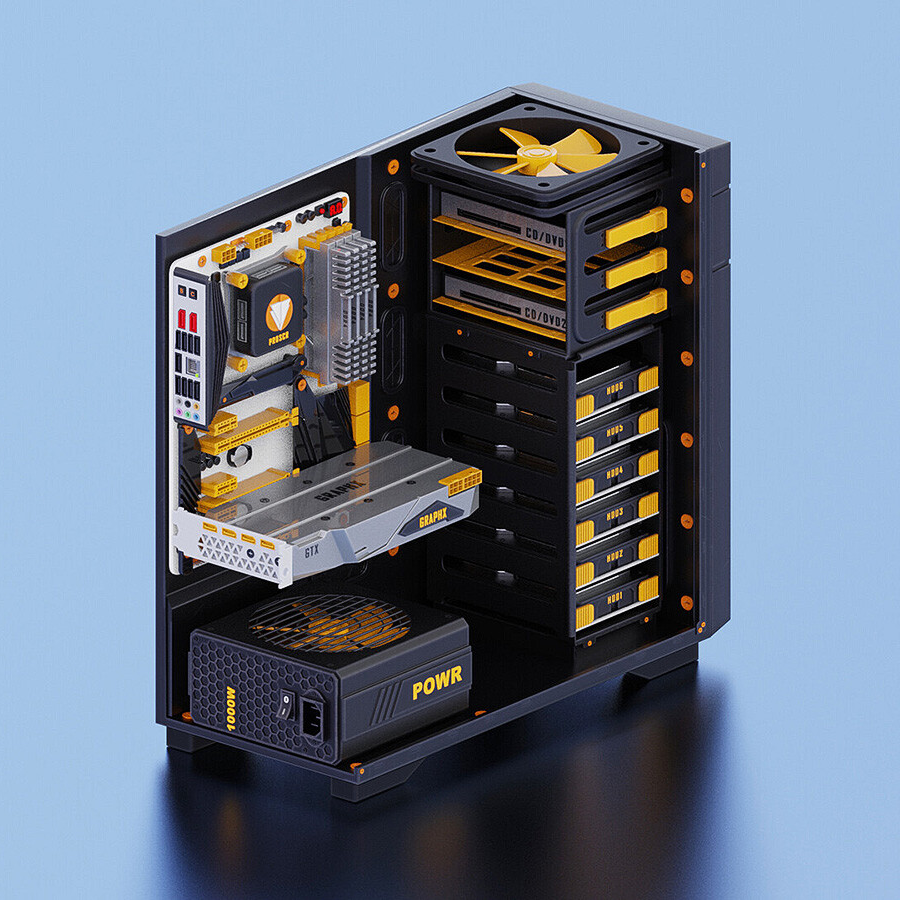I am trying to pass audio from a laptop to a desktop via a headphone jack from the laptop to a line in on the desktop but it provides constant static. I have tried two different aux cords (new). I currently think I might need an USB to Audio Jack Sound Card Adapter but don’t want to buy this too and have to return both if it does not work. Do I need it to be a line out and not a “Headphone Jack” or a sound card?
Thanks
There’s software that can do this for you as well. I pass both input and output over the network with no noticeable latency (via ehernet).
If you’re using Linux and pipe wire, this is supported out of the box:
pactl load-module module-native-protocol-tcp port=4656 listen=IPADDRESS
pactl load-module module-tunnel-sink server=IPADDRESS tcp::4656
They’re other methods on different OS’s, this is just what I use.
Headphone out isn’t identical to line out, but is generally close enough to be used for the purpose. This should be working with a minor degradation in sound quality.
First thing is first: have you plugged headphones into your laptop to make sure the headphone out jack is working? Assuming you have done that…
I suspect you are dealing with the laptop jack being a “headset” jack and not specifically a “headphone” jack. Headphone jacks are “TRS” headset jacks are “TRRS”. See the picture at the top of this.
On the PC side, the line in jack is probably just TRS… if it’s a line in. Is it line in or microphone in? A mic in jack could just be a TS jack.
Are you using a TRS to TRS cable to hook this up? Or a TRRS to TRRS? Or a TRRS to TRS? I’m guessing you tried the first - TRS to TRS. If that’s the case, I would give a TRRS to TRS cable a try. TRRS out of laptop, TRS into desktop.
Edit: actually, assuming you are using a TRS to TRS cable, I’d get this adapter: https://a.co/d/aSMseh4 Adapter plugs into the laptop headset jack, then your TRS cable goes from the headphone jack on the adapter to the Pc. Mic jack stays empty.
I think this is more likely to work than a random TRRS to TRS cable, as those cables can come in a variety internal wirings, so a random cable may not be dropping the mic wire (like you want) and instead be dropping one or both headphone wires.
I did a TRS to TRS, then TRRS to TRRS had no idea they had TRRS to TRS. This might work thanks.
Edit both would work probably. I returned the TRS to TRS one and have the TRRS one currently
In case you didn’t see my edit… see my edit. I think this adapter would be better than a trrs to trs.
If I remember right, the mic wire is getting bridged with the ground by the TRS jack on the computer.
Yes, Thank you. I am going to return the double TRRS and re get the Double TRS with the adapter. Hoping it will work :)
I think there’s a good chance it will work… but to be clear I’m not positive this will solve it. Fingers crossed! And please let me know if it works. I’m happy to help you keep troubleshooting if it doesn’t.
Great thanks :). Do you think the “Ground Loop Noise Isolator” would fix anything even if the static is still there when on battery?
Possible, but I wouldn’t bet on it.
If you want to do more testing while you wait for parts…
See if you can find a substitute device to act as the “laptop” in your setup (something that is putting audio out over a 3.5mm headset jack) and plug into the Pc to see if the issue is still occurring.
Then see if you can find a substitute “desktop” (something with line in) to see if things work. Depending on results you may be able to better isolate where the problem is… I suspect it’s the cabling and the solution will work, but this test may show there is an issue specific to one of your devices.
ctually, assuming you are using a TRS to TRS cable, I’d get this adapter: https://a.co/d/aSMseh4 Adapter plugs into the laptop headset jack, then your TRS cable goes from the headphone jack on the adapter to the Pc. Mic jack stays empty.
this did not work. It in fact made the left side of headphones have no sound and right have sound but static stayed.
Last thing I can think of trying is the ground loop thing since that is the issue.
Generally yeah you should pair line-level i/o together: line out to line in.
Can you share audio with the “static”? That might help us figure out the cause. Sometimes audio hardware is poorly shielded, so ssd/CPU/GPU activity generates noise on the audio lines. I’ve experienced that with many laptops over the years. Does the static get worse if you’re actively using the computer and it’s under load? Which computer or both? Do you hear it with headphones or speakers connected with the volume set high?
It’s a headphone jack so also make sure you have the output volume set pretty high so that the gain on the input side can be lower.
Why are you doing this? If you’re capturing audio to record, and the static is consistent, you might just be able to filter it out.
Yes the audio works even with the static. The static is there when both PCs are about as idle as they get. There is a lot of other tech around (mesh router is basically right next to the laptop) in general though. I am doing this not to record or stream but instead be able to listen to music/video off of one while using the other.
My current thought is I need some kind of sound card or as you said pair the line in of the desktop with something from the laptop that works as a line out and not a headphone jack.
Are they plugged into the same power strip/outlet?
To make sure they share a common ground.
No but they can be.
Edit just tried and still static.
This actually might be the problem. When I first read through the comments, I dismissed ground loop as the issue but on second read, this is the wrong way to test.
A Ground loop can occur due to the two devices being on the same circuit. By plugging in to the same power strip you have made sure they are on the same circuit. You test for ground loop by making sure both devices are on different circuits and checking if the noise goes away. note, that different circuits is not the same thing as different outlets. usually all the outlets in a room (and sometimes adjacent rooms) are on the same circuit.
But you have a very easy test since you are on a laptop. Unplug it and run on battery. Does the noise go away? Then it’s a ground loop issue. You need one of these:
Ground Loop Noise Isolator for Car Audio/Home Stereo System with 3.5mm Audio Cable (Grey) https://a.co/d/gjElz7M
Unplug it and run on battery.
While I was switching between outlets it was on battery and static was still there.
I’ve had the same issue trying to run audio from my Nintendo switch to my PC. I’d love to hear an answer if anyone else has one
Could be a ground loop. Does it change depending on if the laptop is plugged in or literally ONLY has the aux cable plugged into it (on battery).
You’re converting to analog and back, each time generating a bunch of noise (how much depends on the converters). The ideal solution is to cut out the analog signal here.
The only digital way of transferring audio streams I know of are TOSLINK (no idea whether that can work between computers) and custom protocols over standard ip like @[email protected] mentioned.
No, that’s still a DAC. You don’t want any analog signal in the loop here.
I would rather not go network wise
Why not?
Keep in mind that you can always run a dedicated Ethernet cable between two computers, it doesn’t have to go through your home network.
Not sure I will experiment with the network solutions and see if I like one.
Just saw this: https://lemmy.ml/post/8343747
The problem with this one is main PC is Windows and second is Linux or can be whatever I just wish main to stay windows until more games support Linux better I hear good things and play via steam deck but not everything works from what I hear.
I have been looking into options from the earlier post and will probably try one this weekend. At the least I find it really interesting
Oh, Windows is in the mix, that’s unfortunate.
Gaming on Linux has come a long way but it’s not 100% yet; more like 90%. You could try looking up your favourite games on https://www.protondb.com/, it even supports loading up your library to give a more personalised picture.





